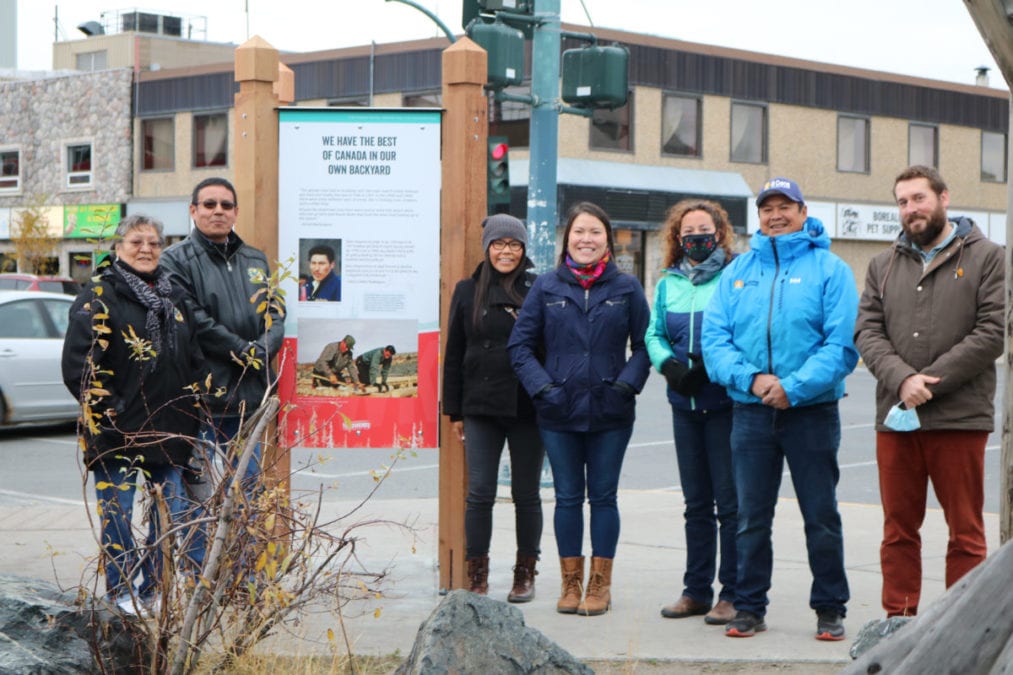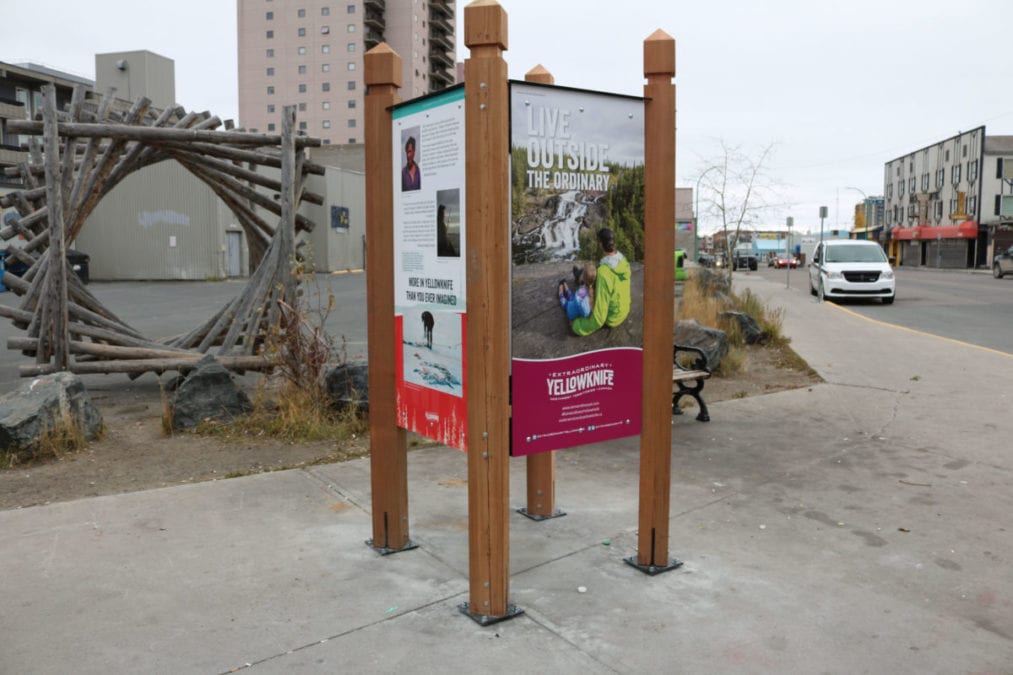The City of Yellowknife marked the erection of six new information kiosks with an unveiling of one of those sites a the corner of Franklin Avenue and 50 Street, Tuesday.
City officials greeted members of the Yellowknives Dene First Nation (YKDFN) in a live presentation of the unveiling, however it was also livestreamed over the municipality's Facebook page.

Simon Whitehouse/NNSL photo
The event started with a prayer song by the Yellowknives Dene First Nation drummers.
RELATED COVERAGE: Information kiosks celebrating heritage, Indigenous culture to be unveiled
lot of work with intercultural and placemaking plan and wayfinding strategy.
Other locations in the city that will see kiosks include the RV fill station at Kam Lake and Old Airport Road, the corner of Franklin Avenue and 54 Street, the Old Town parking lot (School Draw Avenue and Franklin Avenue), the corner of Weaver Drive and McDonald Drive, and at Hank Koenen Park (Wiley Road).
Among those in attendance on Tuesday's presentation included YKDFN Ndilo Chief Ernest Betsina and councillors from the First Nation.
Betsina thanked the mayor and city staff and said the kiosks go a long way in telling the stories of the Yellowknives Dene as original and longstanding inhabitants of the area. He also commended the efforts by the city to "foster reconciliation."
"This kiosk unveils and represents reconciliation and City of Yellowknife have recognized the Yellowknives Dene First Nation of our people, traditions and culture," he said. "We have lived here for thousands of years and continue to live here today.
"Since first contact we have welcomed people to our land with spirit, charity and respect. This kiosk is seen as a tool to teach the people about Dene heritage, history and culture."
Julian Morse, chair of the City of Yellowknife heritage committee said that the kiosks had followed five years of work and input from numerous organizations, including YKDFN councillors past and present.

"It is important to highlight the significance of this kiosk. This is the first time that heritage sites have specifically significant to the Yellowknives Dene have been recognized by the city's heritage committee," Morse said.
Morse pointed out the work that has gone into building reconciliation within the city which has included revising the terms of reference for representation on the city's heritage committee to ensure there is a permanent YKDFN rep on committee.
He also pointed out that the city has created a strategic plan to ensure that Indigenous heritage sites are acknowledged and celebrated. Funding criteria for heritage funding projects have also been revised at the city to to include Indigenous history and perspectives.
Tuesday's unveiling stems from recommendations of the city's Wayfinding Strategy and Intercultural and Placemaking Plan – passed by council this year – which recommended kiosk and the importance of locating historically significant areas.
Robyn Scott and Alison McCreesh are among the artists depicted on the kiosks across the city.
Mayor Alty said that the kiosks have involved a lot of inter-departmental work at the city between planning and lands, well as communications and economic development to promote reconciliation and Indigenous heritage especially.
"This is part of the heritage committee's work of the intercultural placemaking plan and ties in with wayfinding strategy and reconciliation plan.
"It is about ensuring residents know the history of our town as well as visitors. So kiosks have Panels about the historical moment or heritage moment. It is in English and Willideh amd that was highlighted as something for residents that was really important for residents to see more Indigenous language in town. Being able to feature it right downtown was important to the city."